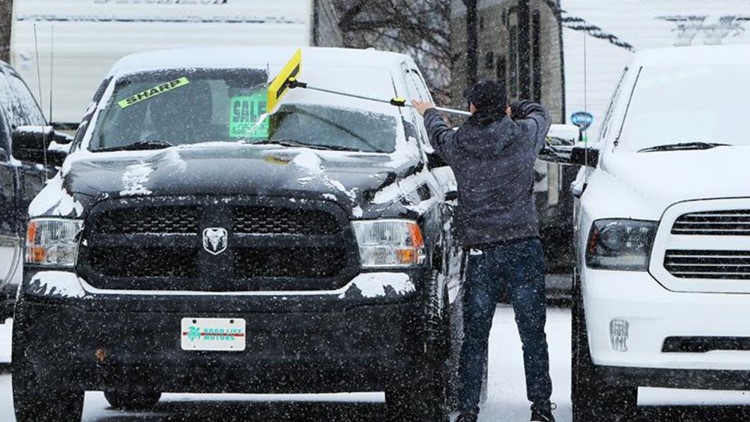BOISE, Idaho — This article originally appeared in the Idaho Press.
The inflation challenge is real. Just ask anyone trying to buy a used or new car.
Used car prices are up 40.5% compared to a year ago, while new car prices are up 12.2%, according to the latest inflation numbers from the U.S. Bureau of Labor Statistics.
The increases are partially due to inflation — the U.S. economy posted a 7% inflation rate last year, the highest since 1982.
But there's another driving factor affecting America's drivers — a shortage of semiconductors.
Also called microchips, semiconductors are crucial elements of modern vehicles. Backup cameras, blind-spot detection, airbag deployment, emergency braking systems and heads-up displays are all features facilitated by semiconductors.
Without the technology, new vehicles can't be built and sold. According to Dr. Anne Walker, Boise State University Economics Department chair, the shortage can be attributed to a few different things: During the pandemic, an increased use of technology that uses microchips; one-off issues — like the severe winter storm in Texas in 2021 — that temporarily shut down some plants; and common COVID-19-related workforce hurdles.
Semiconductors have inelastic supply, Walker explained, meaning it's difficult to increase production, regardless of demand.
"Expanding production capacity requires enormous up-front capital expenditure," Walker said. "Expanding capacity also requires a relatively long time frame due to the degree of technological sophistication of the production process."
So, consumers are turning to used cars. But those aren't as easy to buy, either.
Because of the lack of new cars, used cars are being auctioned to dealerships at much higher prices than in years past. Dealers need to keep their lots full and are "paying whatever it takes to get the vehicles that they need," said Brad Tibbs, owner of Good Life Motors in Nampa. "That really has driven prices up."
Tibbs said his sales have stayed steady through the uncertainty of the pandemic, inflation and supply chain issues. Americans spent less on services in the early days of the pandemic, but were flush with cash thanks to government stimulus payments, Walker said, putting them in a better position to purchase a car. Low-interest rates on financing the purchases helped, too.
"We have to adapt quickly to the new market and we pay more for vehicles when we buy them; we sell them for more and so it works out fine for us," Tibbs said. "Unfortunately for the consumers, prices are like 30% higher than they were two years ago for the same vehicle."
Some people buy cars in cycles, Tibbs said, and rising prices haven't slowed those folks down, just changed their habits from buying new cars to buying used cars. Others are instead choosing to maintain their cars for longer. But repairs are getting more expensive too, Tibbs said, and eventually diminishing returns may force someone's hand.
"A lot of people don't have a choice," said Dennis Combs, owner of Combs Car Corral in Boise and Nampa. "They need a car that functions."
Combs has been in the car business for more than 50 years and doesn't think car prices will permanently deflate to pre-pandemic levels. He equated it to the way fuel prices have steadily risen over decades of bobbing.
"Imagine you're paying $1 a gallon for gas, then you go into a deep sleep and all of a sudden you're paying $4 a gallon," Combs said. "You slowly acclimate and you look around and you go, 'Oh, I guess that's the new price.' That's kind of what's happening."
Experts told PR Newswire they expect supply constraints and tax returns to lead to more price increases through the first half of the year, before "normal price depreciation returns." The Federal Reserve is going to raise interest rates in March, Walker said, which will likely cool demand.
It all comes back to semiconductors and the trickle-down effect they create.
"The rapid rate of increase is unlikely to continue indefinitely," Walker said. "At some point, capacity in the chip industry will expand. The only question is, 'How much longer that will take?'"
This article originally appeared in the Idaho Press, read more on IdahoPress.com.
Watch more Local News:
See the latest news from around the Treasure Valley and the Gem State in our YouTube playlist:



